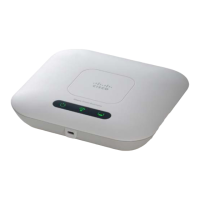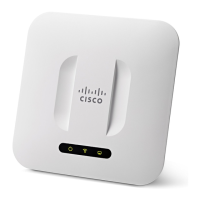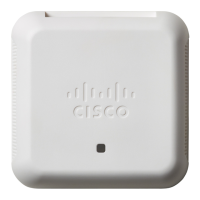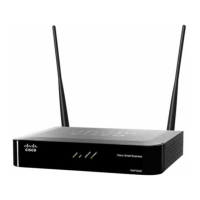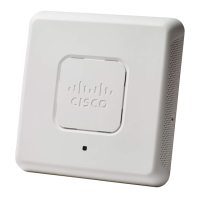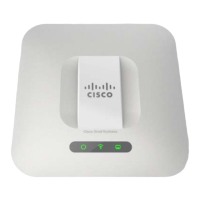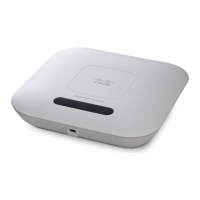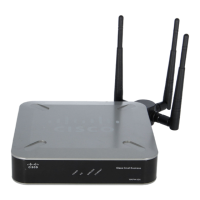Status and Statistics
TSPEC Client Associations
Cisco Small Business WAP371 Wireless Access Point Administration Guide 16
2
A TSPEC is a traffic specification that is sent from a QoS-capable wireless client to a WAP
device requesting a certain amount of network access for the Traffic Stream (TS) it represents.
A traffic stream is a collection of data packets identified by the wireless client as belonging to
a particular user priority. An example of a voice traffic stream is a Wi-Fi CERTIFIED
telephone handset that marks its codec-generated data packets as voice priority traffic. An
example of a video traffic stream is a video player application on a wireless laptop that
prioritizes a video conference feed from a corporate server.
To view TSPEC client association statistics, select Status and Statistics > TSPEC Client
Associations in the navigation pane.
The TSPEC Client Associations page shows this information:
Status and Statistics:
• Network Interface—Radio interface used by the client. WLAN0 represents radio 1 and
WLAN1 represents radio 2.
• SSID—Service set identifier associated with this TS client.
• Station—Client station MAC address.
• TS Identifier—TSPEC Traffic Session Identifier (range 0 to 7).
• Access Category—TS Access Category (voice or video).
• Direction—Traffic direction for this TS. Direction can be one of these options:
- uplink—From client to device.
- downlink—From device to client.
- bidirectional
• User Priority—User Priority (UP) for this TS. The UP is sent with each packet in the
UP portion of the IP header. Typical values are as follows:
- 6 or 7 for voice
- 4 or 5 for video
The value may differ depending on other priority traffic sessions.
• Medium Time—Time that the TS traffic occupies the transmission medium.
• Excess Usage Events—Number of times that the client has exceeded the medium time
established for its TSPEC. Minor, infrequent violations are ignored.
• VAP MAC Address—Virtual Access Point MAC address.
Statistics:

